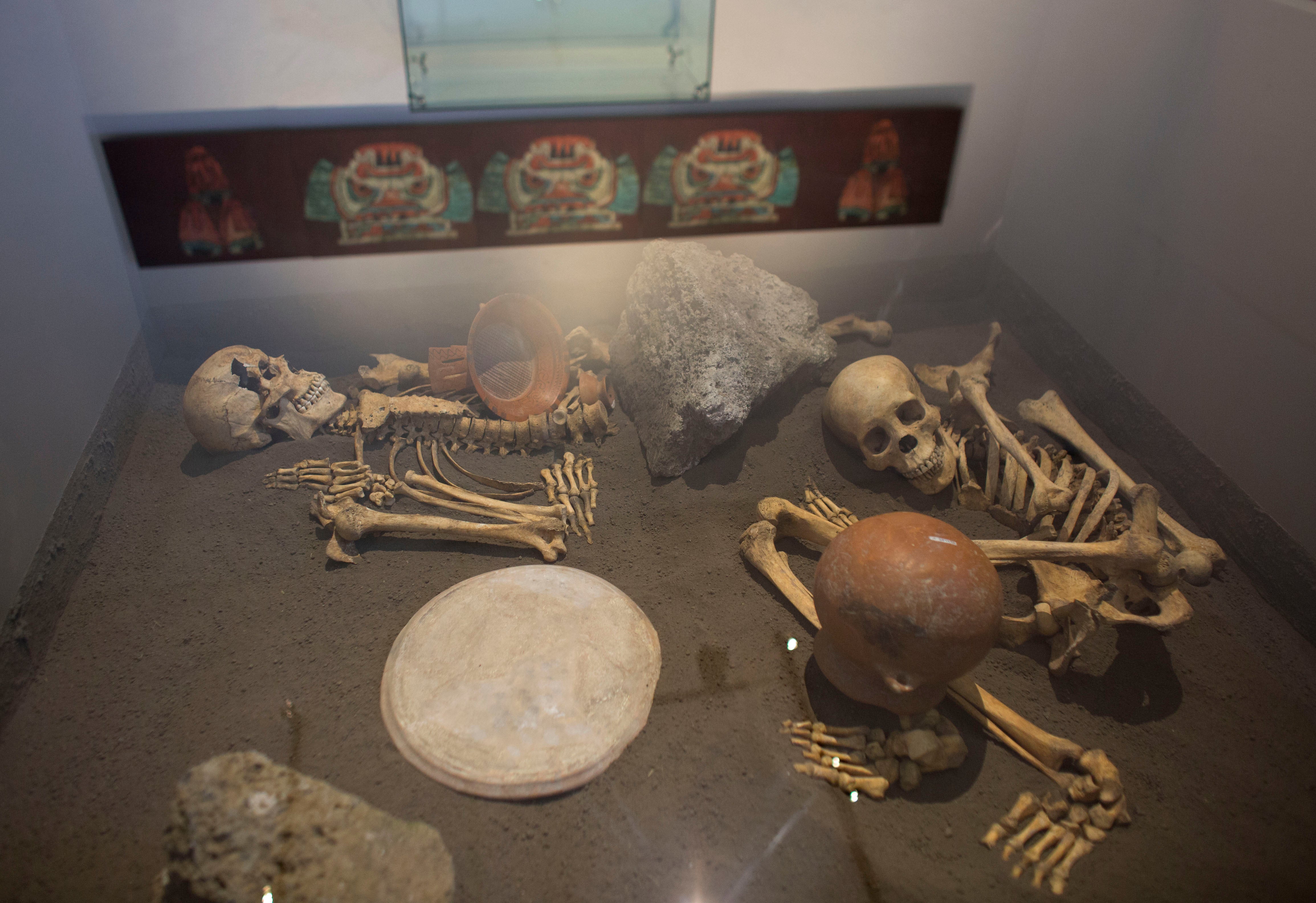Spaniards killed women, kids over slaying of conquistadores
New research suggests Spanish conquistadores butchered at least a dozen women and children in an Aztec-allied town where the inhabitants sacrificed and ate a detachment of Spaniards they had captured months earlier

Your support helps us to tell the story
From reproductive rights to climate change to Big Tech, The Independent is on the ground when the story is developing. Whether it's investigating the financials of Elon Musk's pro-Trump PAC or producing our latest documentary, 'The A Word', which shines a light on the American women fighting for reproductive rights, we know how important it is to parse out the facts from the messaging.
At such a critical moment in US history, we need reporters on the ground. Your donation allows us to keep sending journalists to speak to both sides of the story.
The Independent is trusted by Americans across the entire political spectrum. And unlike many other quality news outlets, we choose not to lock Americans out of our reporting and analysis with paywalls. We believe quality journalism should be available to everyone, paid for by those who can afford it.
Your support makes all the difference.New research suggests Spanish conquistadores butchered at least a dozen women and their children in an Aztec-allied town where the inhabitants sacrificed and ate a detachment of Spaniards they had captured months earlier.
The National Institute of Anthropology and History published findings Monday from years of excavation work at the town of Tecoaque, which means “the place where they ate them” in the Nahuatl language of the Aztecs
Residents of Tecoaque, also known as Zultepec, captured a convoy of about 15 male Spaniards, 50 women and 10 children, 45 foot soldiers who included Cubans of African and Indigenous descent, and about 350 allies from Indigenous groups in 1520. All were apparently sacrificed over the space of months.
When he heard about it, conquistador Hernán Cortes ordered Gonzalo de Sandoval to destroy the town in revenge in early 1521.
Archeologist Enrique Martínez Vargas said excavations suggest the inhabitants of Tecoaque knew a reprisal attack was coming and tossed the bones of the Spaniards — some of which had been carved into trophies — and other evidence into shallow wells.
The townspeople also tried to erect some primitive defensive works along the main thoroughfare of the town, none of which worked when De Sandoval and his punitive expedition rode in.
“Some of the warriors who had stayed in the town managed to flee, but women and children remained, and they were the main victims ” the institute said in a statement. “This we have been able to demonstrate over a 120-meter (yard) stretch of the main thoroughfare, where the skeletons of a dozen women were found who appeared to be ‘protecting’ the bones of ten children between the ages of five and six.”
Photos of the excavations show children's bones beside those of the adult females, with some of the women's skulls or arm bones turned toward the youngsters.
“The placement of the burials suggest these people were fleeing, were massacred and buried hurriedly,” the institute said. “Women and children who were sheltering inside rooms were mutilated, as evidenced by the discovery of hacked bones on the floors. The temples were burned and the statues were decapitated.”
Cruelty was on display on both side in Tecoaque, the site of one of the worst defeats in the Spanish Conquest of 1519-21.
The heads of the captive Spanish women were strung up on skull racks alongside those of men. An analysis of the bones revealed the women were pregnant, and in pre-Hispanic practice that may have qualified them as “warriors.” Another sacrificial offering included one woman’s body that was cut in half near the remains of a dismembered child aged 3 or 4.
One Spanish male was dismembered and burned to replicate the mythical fates of Aztec-era gods, according to one myth known as “El Quinto Sol,” or Fifth Sun.
The convoy was comprised of people sent from Cuba in a second expedition a year after Cortes’ initial landing in 1519 and they were heading to the Aztec capital with supplies and the conquerors’ possessions. Cortes had been forced to leave the convoy on its own while trying to rescue his troops from an uprising in what is now Mexico City.
Members of the captured convoy were held prisoner in door-less cells, where they were fed over six months, the experts said. Little by little, the town sacrificed and apparently ate the horses, men and women. But pigs brought by the Spaniards for food were apparently viewed with such suspicion that they were killed whole and left uneaten.
In contrast, the skeletons of the captured Europeans were torn apart and bore cut marks indicating the meat was removed from the bones.
Cortes went on to conquer the Aztec capital later in 1521.
Mexico is marking the 500th anniversary of the conquest this year with a special round of research and scholarly conferences.